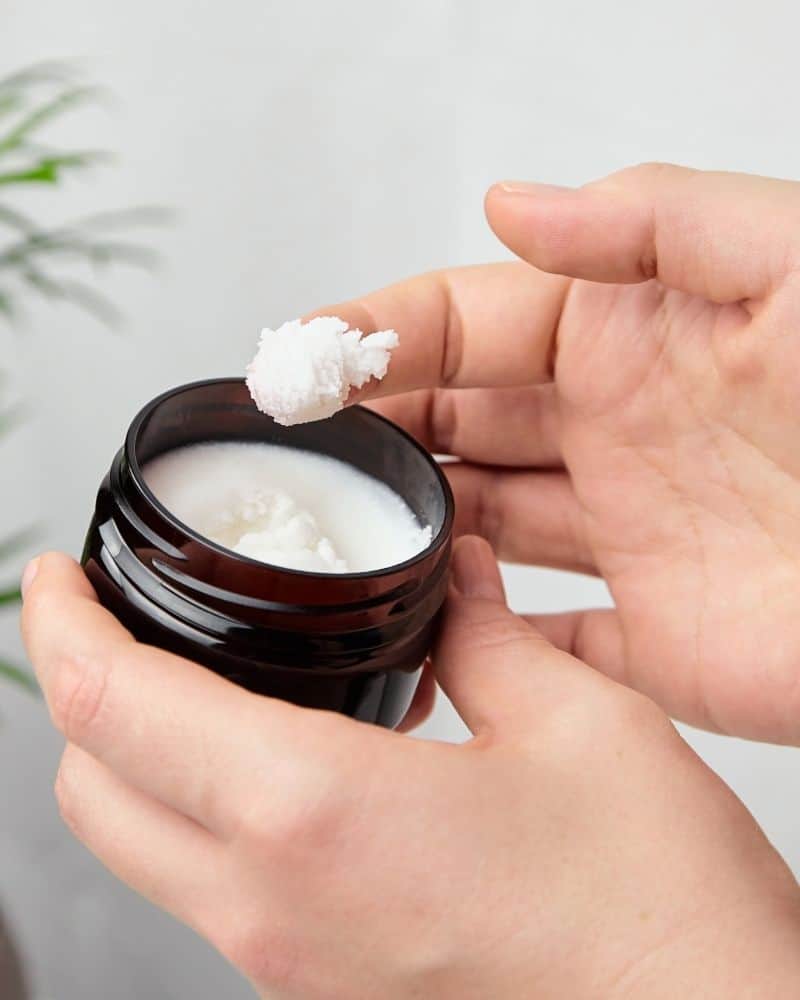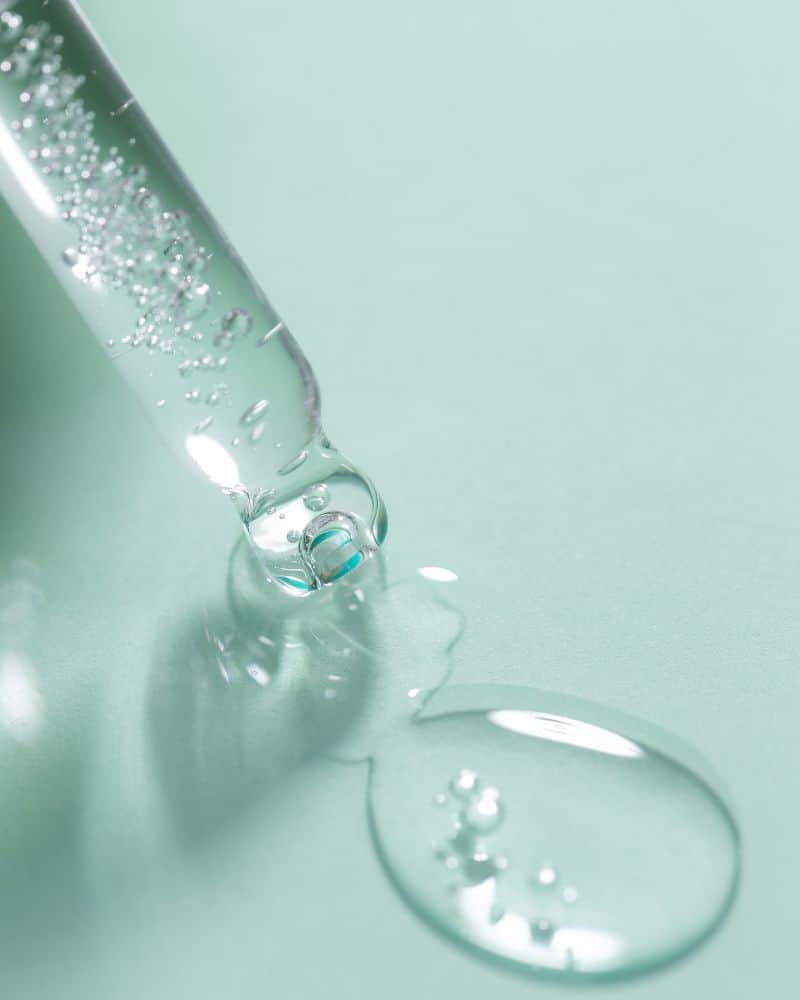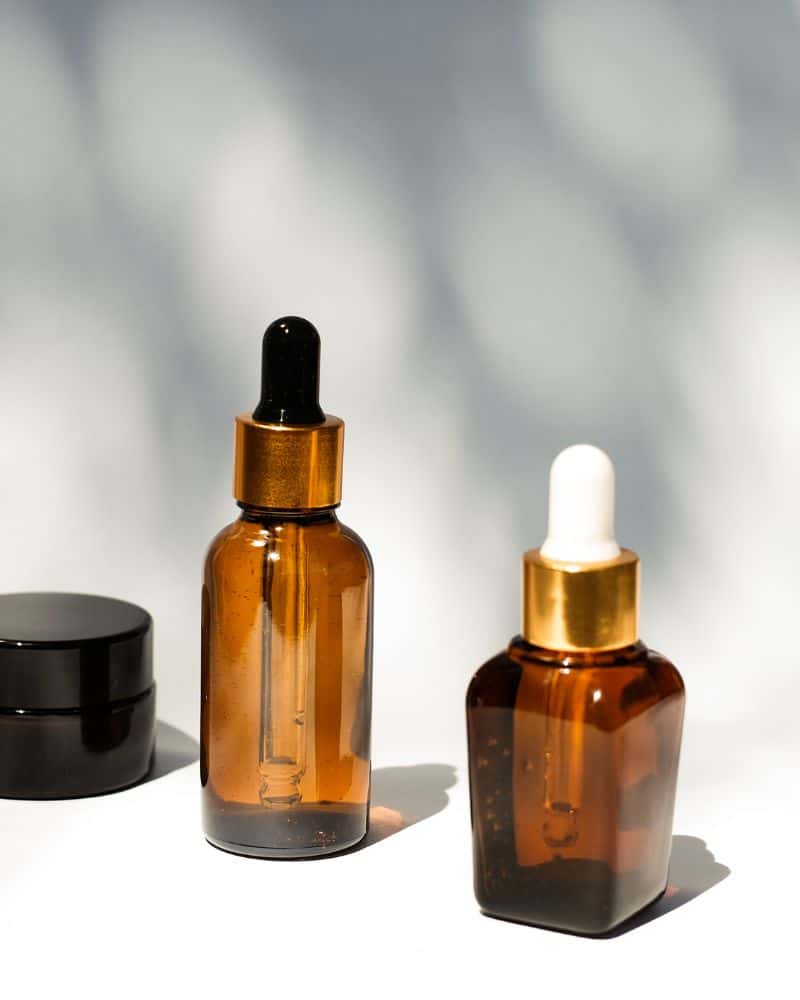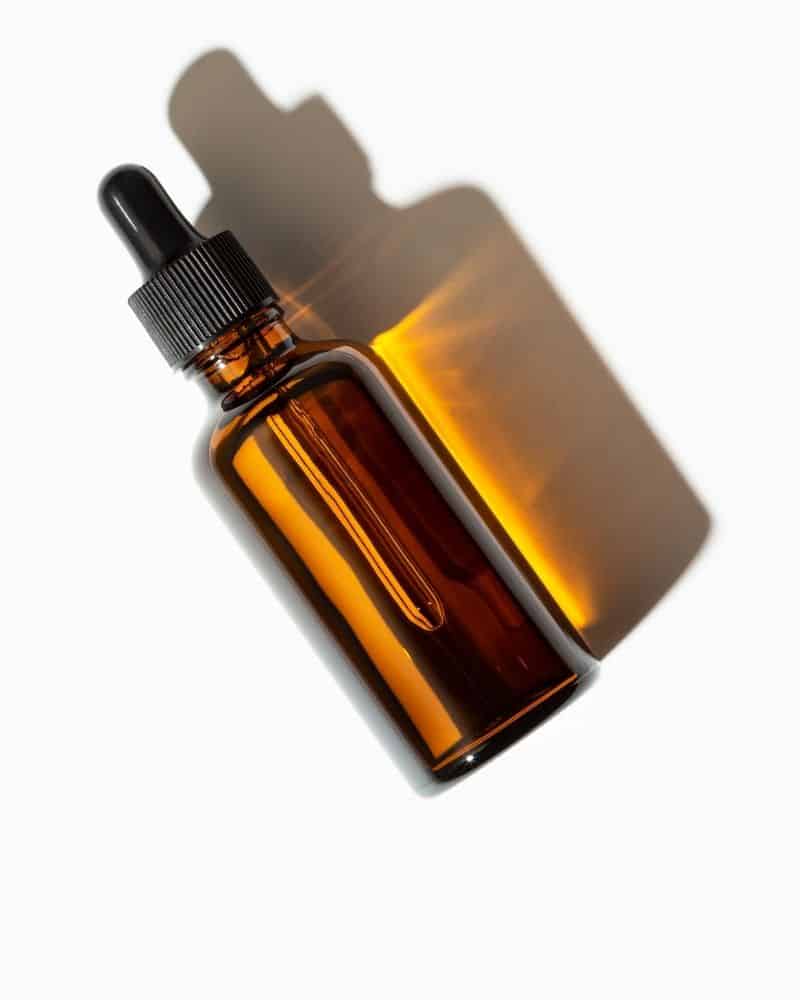Can You Use Lactic Acid And Niacinamide Together? Here’s What To Know
This post may contain affiliate links.

If you’ve ever dabbled in skincare, you’ve probably heard of lactic acid and niacinamide. Together, these powerhouse ingredients can target just about any skin concern you may have. From hyperpigmentation, fine lines and wrinkles, all the way to enlarged pores, lactic acid and niacinamide work synergistically to bring about a brighter and smoother complexion. But can can you use lactic acid and niacinamide together in your skincare routine? The short answer is yes, lactic acid and niacinamide can be used together. However, there are a few things to keep in mind. So keep reading to find out how to use them together and what to know before mixing these two ingredients (including any potential side effects).
What Is Lactic Acid

Lactic acid is a type of alpha hydroxy acid (also known as an AHA). Lactic acid is usually derived from milk. Lactic acid, like all AHA’s, are great for mild exfoliation to reveal smoother, brighter and softer skin. Lactic acid works by dissolving the bonds that hold dead skin cells together. This helps to slough off dead skin cells, unclog pores and reveal the brighter, newer skin cells underneath.
Lactic acid is a milder AHA, making it an excellent choice for those who have sensitive, dry, or dehydrated skin.It has a larger molecule size than other acids, which means it cannot penetrate as deeply into the skin, which is why it’s more gentle. That said, lactic acid works more on the surface level, rather than deep down into the skin.
AHAs are highly effective at exfoliating the skin and helping grow new skin cells, which can improve the appearance of wrinkles, fine lines, and age spots on the skin’s surface. Lactic acid is also known for its hydrating properties, making it a great choice for those with dry or sensitive skin types.
Lactic acid is available in a variety of forms, including gels, creams, serums, and peels. It can be found in both over-the-counter and prescription skincare products.
Related post: Can You Use Lactic Acid With Retinol?
Benefits Of Lactic Acid
Lactic acid is a natural alpha hydroxy acid that is extracted from milk. It is an important component of the skin’s natural moisturizing factor (NMF) and plays a key role in maintaining the skin’s hydration levels.
Lactic acid helps to keep the skin hydrated by attracting and retaining water molecules. It also helps to remove dead skin cells, which can clog pores and lead to acne breakouts. Lactic acid is gentle enough for use on all skin types, and it can be used daily to achieve healthy, glowing skin.
Some of the benefits of lactic acid for skin care include:
- Smooths skin texture – lactic acid can help to improve the appearance of rough, dry skin by dissolving the bonds that hold dead skin cells together. This allows for the dead skin cells to be sloughed away, revealing brighter, smoother skin
- Fades hyperpigmentation – lactic acid can help to lighten dark spots and hyperpigmentation by exfoliating the top layer of skin which will gradually fade any hyperpigmentation or sun spots
- Moisturizes – lactic acid is a humectant, meaning it helps the skin to retain moisture. This makes it a great choice for those with dry or dehydrated skin types
- Reduces signs of aging – lactic acid can help to reduce the appearance of fine lines and wrinkles by stimulating collagen production and increasing cell turnover
Related post: How To Exfoliate Armpits
What Is Niacinamide

Niacinamide is a form of Vitamin B3 that has an array of benefits for the skin. It’s often touted as a do-it-all ingredient. Niacinamide is often found in many different products like moisturizers, serums and toners. It can be used by all skin types and is generally well-tolerated and can be mixed with most skincare actives.
It’s an effective ingredient to treat acne, hyperpigmentation, and premature aging. Niacinamide can also help to brighten the skin and even out skin tone and keep the skin’s moisture barrier strong and healthy.
It’s particularly well-loved among those with oily and acne prone skin as it helps to regulate sebum production and keeps the pores clear. Niacinamide is a gentle ingredient that is suitable for all skin types, even those with sensitive skin.
Benefits of Niacinamide
Niacinamide has a ton of different benefits for the skin, which is why It has become such a popular skincare ingredient.
- Anti-inflammatory – Niacinamide has anti-inflammatory properties that can help to reduce things like redness, rosacea and other inflammatory skin conditions like eczema or psoriasis
- Antioxidant – it can also act as an antioxidant to help protect the skin against environmental damage and therefore decrease signs of aging
- Strengthens skin’s barrier – Niacinamide helps to keep the skin barrier strong by increasing the production of ceramides. A strong barrier helps protect the skin against damage and other irritants. It’s key to having healthy skin!
- Fades hyperpigmentation – Niacinamide can help fade discolorations like acne scars, post-inflammatory hyperpigmentation, sunspots and other blotchiness.
- Minimizes pores – as Niacinamide helps to keep skin more hydrated, this leads to a decrease in pore size
- Balances oil production – helps to regulate and balance the amount of oil that your skin produces
- Treats acne – Niacinamide can also help reduce acne thanks to its anti-inflammatory properties
- Fine lines & wrinkles – Niacinamide stimulates collagen synthesis which helps to diminish fine lines and wrinkles. Long term, it can help with skin elasticity and firmness
- Increased skin hydration – niacinamide increases the skin’s production of ceramides which helps to lock in hydration and prevent transepidermal water loss
Can You Use Lactic Acid And Niacinamide Together?
Yes, lactic acid and niacinamide can absolutely be used together in your skincare routine! This combo can help to address a variety of skin concerns including uneven skin tone, dull skin, fine lines and wrinkles, rough skin texture and even acne.
Lactic acid can help to exfoliate and improve uneven skin texture while niacinamide helps to brighten and treat hyperpigmentation. Together they can work to reveal brighter, smoother skin.
They’re also pretty gentle on the skin, so you don’t have to worry too much about possible irritation.
These two ingredients can be mixed together in your skincare routine, but with one little caveat, which has to do with the pH of the ingredients.
Can I Use The Ordinary Lactic Acid And Niacinamide Together?
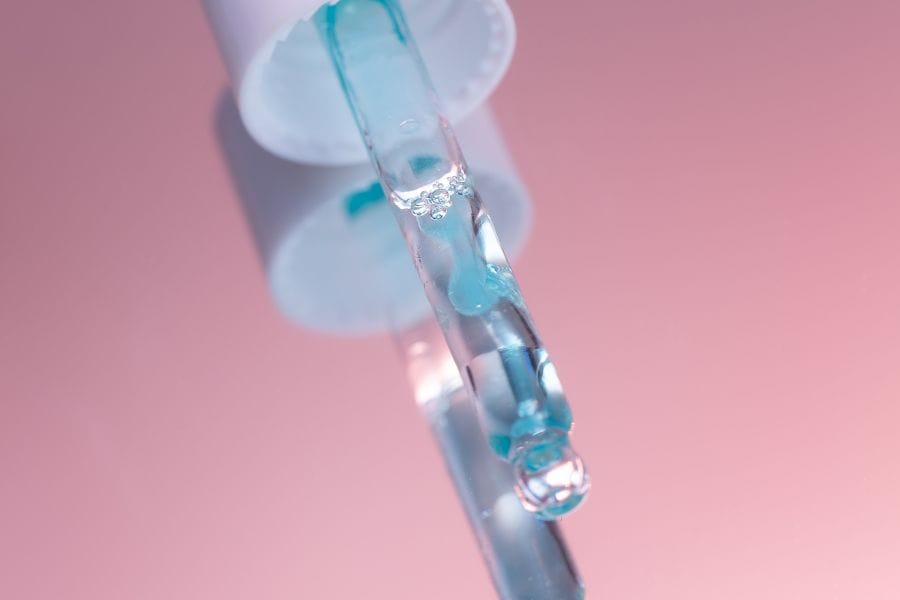
Two of the most popular skincare serums are The Ordinary’s Lactic Acid and Niacinamide. Affordable and effective formulas, but can they be used together?
The answer is yes, but it’s best to use them at separate times in your skincare routine. Lactic Acid has an optimal pH level of 3.0-4.0 while Niacinamide has an optimal pH level of 5-6.
This means that if you don’t layer them properly, the pH level of one product could potentially be thrown off and render it ineffective.
But no worries, you can easily use both of these serums together (more on that later).
Related post: Can You Mix Salicylic Acid With Niacinamide?
Lactic Acid And Niacinamide pH
Niacinamide and lactic acid are both considered “actives” in the skincare world. Actives usually have a pH that they work best at.
For lactic acid, it works best at a pH of 3-4.
Niacinamide works best around 6.
So, the issue is when you apply you lactic acid product, it temporarily lowers the pH of your skin. Which is completely normal and that’s just what needs to happen for it to work on your skin. Let’s take a quick look at why this matters.
Why pH Matters
But the issue is that when you apply your Niacinamide on top of your lactic acid, while the pH of your skin is much lower than Niacinamide’s optimal pH of 6, this can cause the product to become less effective and even cause some serious flushing (temporarily).
The flushing occurs when the niacinamide’s pH is lowered and it’s then converted into niacin, which causing what’s known as the niacin flush.
On the other hand, the niacinamide will raise the pH of the lactic acid, which causes it to be less effective.
So, if you want to use lactic acid and niacinamide together, it’s best to space them out. Now there are a few ways you can do this, which we will get into below.
How To Use Lactic Acid And Niacinamide Together
You can easily layer niacinamide and lactic acid together in your skincare routine, but there are a few rules you’ll need to follow to avoid the niacin flush and to keep your products effective. If you don’t layer these two ingredients properly, you risk flushing, redness irritation and your products will be less effective.
So how do you use lactic acid and niacinamide together? There are a few different options.
1) Apply lactic acid first and wait 20- 30 minutes – This allows the lactic acid time to do its job without being affected by the higher pH of the niacinamide.
2) Use them at alternate times – for example, use lactic acid in the evening and niacinamide in the morning
3) Use them on alternate days – for example, lactic acid on Monday and Thursday, niacinamide on Tuesday and Friday
If you want to keep things as simple as possible, you can still use both niacinamide and salicylic acid together at the same time, but you’ll need to space them out slightly.
Since the optimal pH of lactic acid is lower than that of Niacinamide, you’ll always need to apply the lactic acid first and then wait a little while before applying the niacinamide on top. You’ll need to wait at least 20-30 minutes.
The time allows for your skin’s pH to return to a more optimal level that’s close to the pH of niacinamide. This helps to keep both actives doing their thing and reduces the risk of flushing.
It’s also important to note that there are some products on the market that have both niacinamide and lactic in them. While it’s totally fine to use a product like this, just keep in mind that these two ingredients both have optimal pH’s they work best at. So these combination products likely don’t have the right pH for both products to be as effective. That’s not to say they aren’t effective, but they just aren’t as effective as they would be if you were using two separate products (like a lactic acid serum and a Niacinamide serum).
Benefits of Using Lactic Acid and Niacinamide Together

So why use lactic acid and niacinamide together? They both have amazing benefits for the skin.
Lactic acid is a gentle exfoliant that helps with texture, fine lines and wrinkles, hyperpigmentation and overall brighter complexion. It’s also great for those with sensitive skin as it’s gentle but still effective.
Niacinamide, on the other hand, is a powerhouse ingredient that helps with everything from reducing redness and inflammation to improving skin’s barrier function and counteracting the effects of aging.
Together, lactic acid and niacinamide make for a dynamic duo in improving the overall appearance and health of your skin. Here are some of the things you can expect from using lactic acid and niacinamide together:
- Smoother skin
- Brighter skin
- Smaller pores
- Reduced fine lines and wrinkles
- Improved skin tone and texture
- Reduced inflammation and redness
- Improved skin barrier function
Ultimately, lactic acid and niacinamide are both great skincare ingredients with a plethora of benefits. And while they do need to be used carefully together, the results can be well worth it.
Can You Mix Lactic Acid And Niacinamide Wrap Up
Lactic acid and niacinamide are two powerhouse skincare ingredients that offer a multitude of benefits when used by themselves and together. When used together, they can help exfoliate the skin, brighten the complexion, and even out the appearance of hyperpigmentation. However, it’s important to remember that lactic acid and niacinamide have different optimal pH levels. So when using them together, lactic acid should always be applied first and given time to work before applying niacinamide on top. This ensures both ingredients are able to work effectively and helps reduce the risk of irritation.

